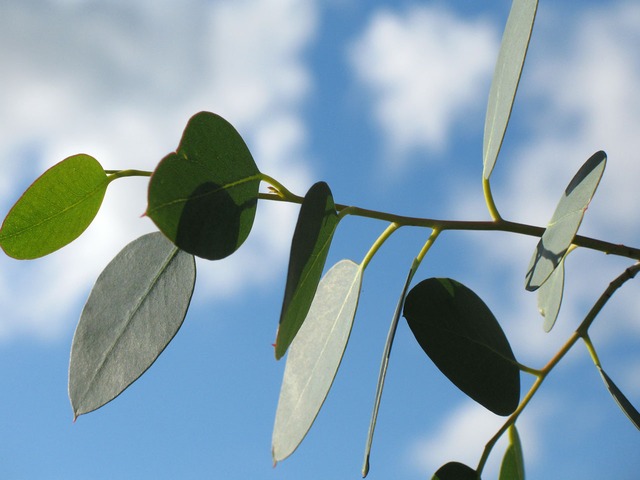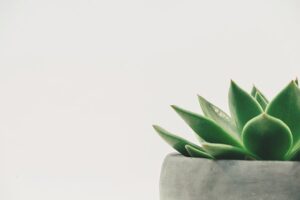Artificial flowers are manmade flowering plants that are used for commercial or residential decoration. They are occasionally created for scientific purposes. Artificial plants range in complexity from mass-produced varieties that can be distinguished from real plants based on casual observation to highly detailed botanical or artistic specimens.
Artificial flowers and faux foliage were once frowned upon. They were cheap, plasticky, and tacky, and there were few alternatives on the high street. But let’s be clear: while we would obviously prefer to have real flowers and foliage in our homes at all times, the upkeep is a pain in the ass. They require love and attention, and they die so quickly, which makes us feel awful about ourselves.
We’re too preoccupied with keeping ourselves – and, at times, our pets – alive; coming home to wilting flowers does nothing to lift our spirits. Not to mention the weekly cost of fresh flowers. Unless you are naturally connected with nature and enjoy nurturing your plants and flowers, giving them a trim, feeding them, and replenishing their water, you, like us, have been secretly hoping that artificial plants would up their game. In 2017, they did.
Table of Contents
How to choose the best faux plant for your décor?
Artificial plants, like any living plant, can work wonders for any décor situation, and we doubt anyone will notice the difference once they’re displayed on a nice plant stand. We found some subtle options, such as mini succulents and an aloe plant, as well as larger ones for those who aren’t afraid to go all out with a big statement ficus tree or monstera. An artificial plant, no matter how big or small can give you the look you want without all the fuss.
The foundation of any flower arrangement project is greenery. Consider it a canvas that has been strategically laid out to make the focal flowers stand out. All of the green draws attention away from the vibrant colours of your sola wood flowers. These plants are also used to give your projects shape, colour, and texture. Spillover centrepieces and cascading bouquets are both difficult shapes to achieve without the use of foliage.
And, if we’re talking about greenery, it’s impossible to avoid mentioning everyone’s favorite foliage: eucalyptus. It’s one of the most recognizable and popular greenery options in craft stores and florist shops. Its mild and minty scent is both relaxing and invigorating, and it has been shown to reduce anxiety levels. It is used as a filler in both bouquets and arrangements.
What are the different kinds of eucalyptus?
There are numerous varieties of eucalyptus to choose from in both tree and shrub forms. Personal preference is usually the deciding factor. Choose those that are appropriate for your growing zone, garden, and reason for wanting eucalyptus. Shade, firewood, decoration, or heavy oil production are all possible reasons.
Types of eucalyptus
1- Argyle Apple
This eucalyptus tree is native to Australia’s southeast. It is also known as the silver dollar tree because its silvery blue-green leaves are round when young and resemble large silver coins. They are commonly used as decorative foliage in cut flower bouquets and floral decorations when they take on this shape. The leaves become elongated and narrow as they mature grow into a deep green colour.
2- Rainbow Gum
It’s easy to see where this tree gets its common name from, as the summer bark looks like it’s been painted in a rainbow of watercolours. The bark is normally orange-brown with a smooth texture, but it peels off throughout the summer to reveal a series of random multicoloured streaks. It is widely planted as an ornamental tree due to its beautiful bark, however, it is also widely cultivated for the production of pulp, which is used to make white paper. The rainbow gum tree is the only eucalyptus tree that grows natively in the northern hemisphere and the only eucalyptus tree that grows in a rainforest environment.
3- Mountain Gum
Australia is home to this fast-growing eucalyptus tree. Its distinguishing feature is its smooth creamy white and grey bark, which flakes off on a regular basis. This tree’s ovate foliage is copper-green when young, but matures to a deep blue-green with a dropping style. The tree has a strong eucalyptus scent with hints of cinnamon.
4- Tasmanian Snow Gum
This magnificent tree is indigenous to Tasmania, hence its common name. It has a stunningly elegant bark that is smooth and colourful. The bark is marbled, with long streaks of grey, cream, and pink running across the twisted branches. When young, the foliage of this tree hangs from bright red stems and is heart-shaped, but when mature, it develops into a lance shape.
5- Snow Gum
The branches of this eucalyptus tree are elegantly twisted and covered in highly ornamental bark. The bark is creamy-grey in colour, but it peels away in narrow strips to reveal smooth orange or green patches. The tree’s new growth appears in bright red, making the tree very colourful when viewed as a whole. The foliage is grey-green with a glossy texture. The leaves have a light eucalyptus scent and serve as a backdrop for clusters of white flowers that bloom throughout the spring and summer.
6- Alpine Snow Gum
This plant, native to southeastern Australia, is small for a eucalyptus tree and can grow as a small tree or a large shrub, reaching a height of 10 to 25 feet. Its branches are gently twisted and covered in smooth grey-brown bark that peels away in long ribbons to reveal stretches of green.
7- Candlebark
This tree can grow to be medium or large in size, with a mature height of 30 to 100 feet. The tree’s bark is smooth and creamy, and it peels off in ribbons in various shades of pink, orange, and brown. The tree’s young foliage is round and blue-grey in colour.
8- Jounama Snow Gum
This Australian native is a small to medium-sized tree with an open habit. It can have one or several main stems. The bark of this tree is pale brown and peels off in narrow strips to reveal patches of green, grey, white, and cream. The foliage of the tree is large, silver-green, and has a broadly ovate shape. Blossoms appear in clusters among the foliage in summer, in creamy white.
This is a hardy eucalyptus that can tolerate low temperatures, and it also fares well in exposed conditions in coastal locations. It prefers moist soil though it can tolerate drought. The tree has been the recipient of the Award of Garden Merit from the Royal Horticultural Society.
9- Spinning Gum
This Australian native takes the shape of a large shrub or a small tree, typically growing to between 20 and 30 feet in height. The plant has a spreading habit, sometimes becoming as wide as it is tall. The grey-brown bark peels away in ribbons to reveal patches of green, white, and grey. The young foliage of the tree is popular among florists as it has an attractive rounded shape. The leaves also give off a sweet fragrance, reminiscent of mint.
Though best grown in full sun, this eucalyptus can adjust to a position of partial shade and will tolerate a range of poor soils.
10- Narrow-leaved Peppermint
The narrow-leaved peppermint tree is named after its slender leaves and the peppermint fragrance they give off when crushed. The tree is native to eastern Australia, though it is now commonly cultivated in the western United States, including California. It has a vigorous growth habit with upward reaching branches. It typically has a slender silhouette, which is enhanced by its narrow draping foliage, which dangles elegantly from bright red stems.
Clusters of white flowers adorn this tree from summer right through to fall. The tree is drought-tolerant and should be watered conservatively. It will not fare well in wet or soggy soil.
11- Cider Gum
This upright tree is one of the fastest-growing among all eucalyptus, with a final height of between 30 and 70 feet. It takes a conical shape, looking like a stretched, tall pyramid. It is densely branched with masses of closely packed foliage to create a thick canopy of leaves. When young, the foliage is rounded and silver when it is popularly used among florists for cut flower bouquets and other floral arrangements. As the leaves age, they take on a lance shape and develop into a blue-green colour.
The bark of the tree has a smooth texture, and flakes away in large pieces to reveal pink-brown patches. The tree is drought-tolerant and does not require much water to thrive. It prefers fertile soil, though it will tolerate average soils. It has been awarded the Award of Garden Merit by the Royal Horticultural Society.
What is the significance of eucalyptus?
-Using eucalyptus for crafting
While eucalyptus is a hardy bush, fresh eucalyptus stems have leaves that will still wilt and die. The average lifespan of a eucalyptus stem out of water is about 3-4 days which is good enough to last the entire day of your celebration, but if you want to send the flowers home with your guests, using preserved eucalyptus is a better option so it can be kept for longer.
– Using preserved eucalyptus for bouquets
Eucalyptus is used in designing individual components during an event, but it can also be used as the overall design aesthetic. We’ve seen wedding blogs with designers who incorporated different types of eucalyptus species in the wedding decorations: Seeded and Baby Blues in the bouquet; garlands of Silver Dollar as table runner; Willow eucalyptus as aisle decor; and a combination of different eucalyptus species and a bunch of dainty flowers on the wedding arch. Instead of spending too much money on pricey flowers, design cohesiveness can be achieved by emphasizing the use of the same foliage in your designs.
– Glycerin Preservation
Glycerinating is the process of preserving flowers and plants with the use of glycerine. It has several advantages, including soft and pliable petals and leaves even after it has completely been preserved.
– Silica Gel
Working with silica gel is really simple, but there are a few techniques we want to share with you to make sure your eucalyptus looks their best after they are preserved.
How do you plant eucalyptus trees?
Local growing guidelines will help you care for your eucalyptus plant. Following these additional suggestions can provide you with years of enjoyment from your plants.
Some eucalyptus varieties tolerate light shade, but all of them love the sun. As long as they have good drainage, the plants will do well in both dry areas and wetter climates. They are not picky about soil makeup.
Although all eucalyptus trees require full sun, some species, such as E. neglecta and E. crenulata, will tolerate semi-shade. They also tolerate a wide range of soil conditions, from hot, dry to slightly wet, as long as the area is well-draining. Depending on your location and climate, plant eucalyptus in the mid to late spring or fall. Water the tree both before and after planting. Dig a hole slightly larger than the root ball, and be careful not to disturb the tree’s roots during planting, as they do not like being disturbed. There is no need to spread out the roots when planting because this could harm their delicate root system. Backfill the area with soil and lightly tamp it down to remove any air pockets.
For container plantings, choose a pot at least two feet in diameter. Use quality potting soil and ensure there is sufficient drainage. Monitor your plant’s growth as eucalyptus plants can fill their container with roots and may need to be potted up.
What growing zones are best for eucalyptus plants?
Eucalyptus plants thrive in growing zones 8-11. Potted specimens can be grown down to zone 4. These pots must be brought inside and sheltered from the cold weather. Select eucalyptus varieties are able to withstand freezing temperatures, even when planted outside.
How to care for a eucalyptus tree?
Eucalyptus tree care is not difficult because this type of tree usually takes care of itself fairly well. With the exception of those grown in containers, eucalyptus trees should not require much watering once established. Allow these to dry slightly between watering. During periods of extreme drought, however, additional watering may be required.
Watering and Nutrients
Eucalyptus plants are known for being drought-resistant. New plantings may need heavy watering and a light mulch until established. Once deep roots are set, light watering should suffice in very dry climates. In wetter areas, you may not need to water at all. Potted eucalyptus have higher water demands as the containers can dry out.
Eucalyptus doesn’t like most fertilizers and the extra phosphorus they contain. Instead they’re content to get their nutrients from the soil. You may lightly supplement potted eucalyptus plants with low or no phosphorus fertilizers.
Pruning
Eucalyptus is generally low maintenance. If your plant becomes too tall or messy, you may consider some light pruning. Branches that become too heavy or damaged may also need removing as the plant ages. If your plant has pest or disease issues, a heavier pruning session is an option.
Pests and Diseases
Eucalyptus plants are hardy, but they can become stressed by pests or diseases. Regular inspections can find problems early and keep damage to a minimum. Some pests hide in fallen leaves, bark, and branches. Clear them out annually as a good preventative measure.
Psyllids or plant lice are the most common eucalyptus pest. They suck the eucalyptus sap, depleting and disfiguring the plant. Psyllids rarely cause catastrophic damage by themselves, but they do attract additional culprits. A plant that’s been weakened by psyllids can attract eucalyptus long-horned borers. These pests bore into the plant’s inner layers to lay eggs. Their ravenous larvae hatch and can kill a plant within weeks. Removing damaged or infected areas of a eucalyptus plant may help slow the process.
How long do eucalyptus plants live?
Depending on how it’s stored, eucalyptus can last anywhere from 3 weeks to several years. Fresh cut eucalyptus kept in a vase or hung in the shower will last approximately 3 to 8 weeks, while preserved eucalyptus will last for years when stored correctly.
Alternatives to planting eucalyptus?
While it is easier than ever to buy live plants online, despite our best efforts, those live plants can sometimes become, well, dead plants. Artificial plants, also known as fake plants, silk plants, faux foliage, or whatever you want to call them, provide an easy solution. They will never outgrow their pots, the leaves will never droop and turn yellow, and there will be no need to water or fertilize them. They’re also pet-safe and child-safe.
Our Best Artificial Eucalyptus List
Technical Details
- Brand: Thinkingwings
- Colour: 2 Pcs Gray Green
- Package Dimensions: 43.7 x 11.3 x 8 cm; 170 Grams
- Material: Plastic
- Item Weight: 170 g
The beauty of artificial greenery plants is they look natural, life-like and vivid realistic, incredibly realistic faux green plants bring you the sunshine of spring at all times. Mix it with other flowers and no one will know the difference. Ideal for any landscaping project or decoration style.
- Brand: Thinkingwings
- Colour: 3 Pcs Tender Green
- Package Dimensions: 41.6 x 24.5 x 7.8 cm; 140 Grams
- Material: Plastic
- Item Weight 140 g
- Made of premium material, safe, practical and durable. Artificial Simulation Leaves Leaves Adornment for Wedding Home Party Garden.
- Suitable for decorating the porch, living room, bookshelf, desktop, etc. Can be used in home, hotels, guesthouses, Garden, etc.
- Fake flower for home decor and you don’t need to spend time watering like real plants but still add a natural atmosphere to your house.
- Fine workmanship makes it not easily deform and break. The lifelike artificial flower remains just as fresh-looking and beautiful year after year.
- It has the power to transform and make a beautiful life. Perfect for various occasions decoration, such as wedding, theme party, home gathering.
Technical Details
- Brand: Cabilock
- Model Number: 114220017G
- Colour: Green
- Product Dimensions: 36 x 12 x 5 cm; 60 Grams
- Material: Plastic
- Item Weight: 60 g
- Use these grey-green eucalyptus leaves to add extra colour and texture to bouquets, wedding centrepieces, and home vase arrangements. These sprigs are simple, decorative greenery, here to provide your home or wedding decoration with plenty of natural and dusty green possibilities.
- Eucalyptus Leaf Sprays can be placed anywhere. Squashing them is not a problem. They can be brought back to life easily by smoothing out the petals and leaves or by holding them over a pot of boiling water for a few seconds. Watch them return to their original, plumped shapes.
Technical Details
- Brand: Chenguo
- Colour: Green
- Package Dimensions: 42.4 x 30.5 x 4.8 cm; 160 Grams
- Material: Silk, Iron, Plastic
- Item Weight: 160 g
Technical Details
- Brand: YQing
- Colour: Green-white
- Package Dimensions: 35.4 x 25.2 x 8.9 cm; 290 Grams
- Material: Plastic
- Item Weight: 290 g








